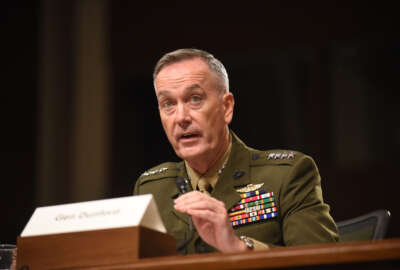Pay raises and troop number increases are among the highlights of the first 2017 defense authorization bill markups, released April 19.
The six House Armed Services subcommittees released their recommendations for the yearly defense policy bill.
Among the provisions is a 2.1 percent increase for active duty military personnel, said committee staffers. That number is a half a percent increase compared to the 1.6 percent raise for service members President Barack Obama requested in his budget back in February.
The markup also calls for an increase of 27,000 active duty troops. But, even bigger policy decisions are expected to come out when the full committee releases its markup next week. That bill will have recommendations for TRICARE reform and weapons procurement reform, committee staffers said.
The pay increase is tied to the Employment Cost Index, which measures the pay increase private sector employees are likely to get.
“The past three years the pay raise has been lower than the Employment Cost Index (ECI) … in the military it’s spelled out in law that their pay raises would not drop below ECI,” said Kelly Hruska, government relations director for the National Association of Military Families. “Service members include this in their family budgeting.”
Hruska said new retirement pay-in requirements and rising TRICARE costs have dipped into service members’ pockets, slimming down the paycheck they see every month.
The 2.1 percent increase would be the largest raise for service members in at least three years.
If the Military Personnel Subcommittee gets its way, more troops will be eligible for that higher pay. The subcommittee’s markup recommends increasing the Army’s ranks by 20,000 troops. That goes in direct contrast to what the Obama administration has been advocating the past few years.
The Defense Department mandated the Army reduce its numbers to 450,000 active military by 2018. The 20,000 increase will put the active duty numbers at 480,000 for 2017.
The markup also calls for 3,000 more Marines and 4,000 more members of the Air Force than what the President requested.
Justin Johnson, a senior policy analyst at the Heritage Foundation, said adding those troops will be a costly endeavor. He estimates the price tag at $1.5 billion to $2 billion just for 2017. That doesn’t include enduring costs.
That’s not a small amount when the Defense Department claims it pinched every penny of the nearly $600 billion budget it proposed for 2017.
Johnson said Congress will have to offset those funds, or more likely, it will create a second contingency fund similar to the overseas contingencies operations fund for the new president to use for emergencies, which is not subject to sequestration caps. At least, that would be one way Congress could increase defense spending without bumping up against the caps set by the budget deal.
Of course, what is important to keep in mind is these markups are only drafts for the larger defense authorization bill.
The markups still need to be approved by the full committee, that will happen next week, and the House as a whole.
Meanwhile, the Senate is going through the exact same process and the two houses must reconcile any differences in their bills before it’s sent to the President for a signature or veto.
Copyright
© 2024 Federal News Network. All rights reserved. This website is not intended for users located within the European Economic Area.
